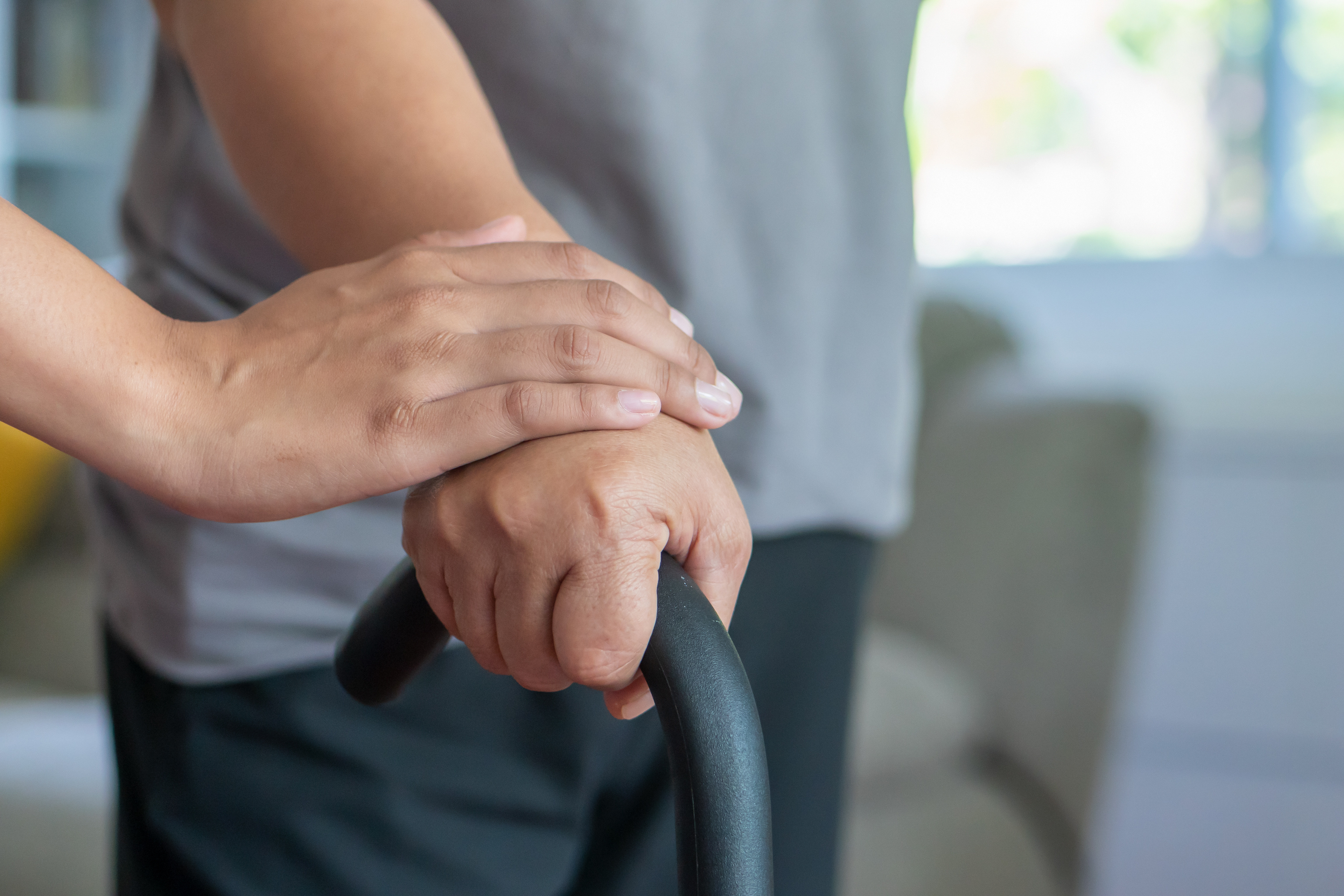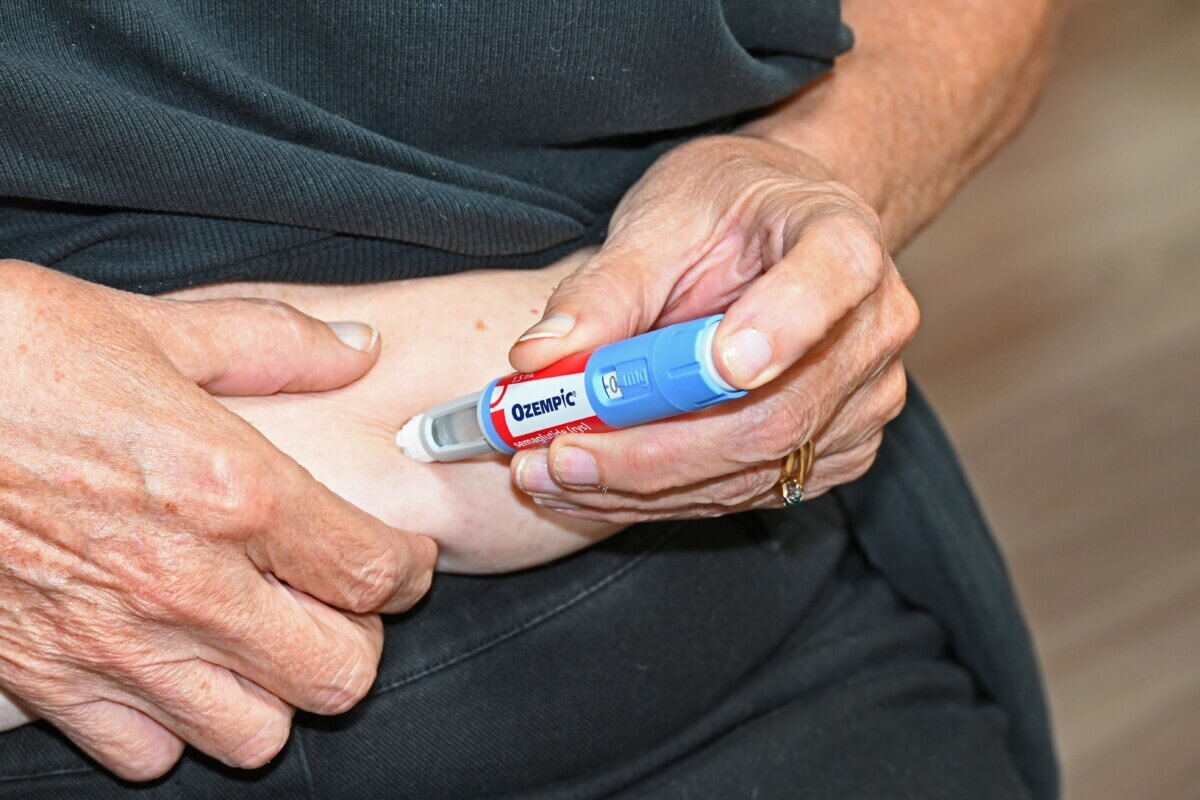Everything you need to navigate Parkinson’s with confidence—right here in this blog.
From understanding symptoms to building daily routines, staying active, and finding local support, this blog offers clear answers and expert strategies. Whether you're newly diagnosed or supporting someone close to you, you'll find practical advice, encouragement, and reassurance every step of the way.
Table of Content
1. Understanding Parkinson’s Disease
3. Medication & Treatment Overview
4. Everyday Strategies & Lifestyle Modifications
5. Managing Non-Motor Symptoms
6. Maintaining Independence & Quality of Life
7. Support Systems & Caregiver Resources
8. Next Steps
9. Frequently Asked Questions (FAQ)
1.Understanding Parkinson’s Disease

What Is Parkinson’s?
Parkinson’s disease is a progressive neurological condition. It happens when the brain slowly loses cells that produce dopamine—a chemical that helps control movement. As dopamine levels drop, movement and coordination become more difficult.
Core Symptoms
While Parkinson’s can look different for everyone, some common symptoms include:
- Tremors – often starting in the hands or fingers
- Slowness of movement (bradykinesia) – everyday tasks may take longer
- Muscle stiffness (rigidity) – tight muscles that can limit movement
- Impaired balance and coordination – leading to unsteadiness or falls
Impact on Daily Life
These symptoms can make everyday activities—like dressing, walking, or writing—more challenging. They can also affect independence, mood, and overall quality of life. But with the right support, many people with Parkinson’s continue to live active, fulfilling lives.
2. Diagnosis & Early Steps
Receiving a Parkinson’s diagnosis can bring up a mix of emotions—relief at having answers, uncertainty about what’s next, and questions about how life may change. The good news is: early support can make a meaningful difference.
First Consultation
Most people start their journey by seeing a neurologist. This first step usually involves a physical exam, a review of your symptoms and medical history, and possibly imaging or lab tests to rule out other conditions. There’s no single test for Parkinson’s, so diagnosis is often based on your symptoms and how they respond to certain medications.
Initial Treatment Approach
Treatment in the early stages often includes medications like Levodopa, which helps manage motor symptoms by boosting dopamine levels in the brain. Alongside medication, your care team may recommend adjustments in diet, sleep, and activity to support overall wellbeing.
But medication is only one piece of the puzzle. How you move—and how you’re supported to keep moving—can change the course of your condition.
Building a Support Team
Early intervention is one of the most powerful tools you have.
Physiotherapists and Exercise Physiologists can help you stay ahead of symptoms by supporting strength, balance, posture, and mobility—before major changes set in. Starting movement-based therapy early can slow physical decline, improve confidence, and help you keep doing the things you love.
%20(1).jpg?width=5568&height=3712&name=Seniors%20FSG(1)%20(1).jpg)
WA Health Group have seen firsthand how early rehab makes a difference. Our experienced team has supported many people living with Parkinson’s to move better, feel stronger, and maintain independence—through personalised care and structured programs that deliver real-life results.
We also offer exercise classes designed specifically for people with Parkinson’s, creating a safe and supportive environment to move with others who understand the journey. These classes not only build strength and balance, but also foster routine, connection, and motivation. Many participants find that exercising alongside people with similar experiences makes the journey less isolating—and more empowering.
Whether you choose individual support or group-based care, getting started early gives you more control, more confidence, and better long-term outcomes. Contact us to learn more, ask questions, or book your first appointment or class. You’re not alone—and you don’t have to navigate Parkinson’s alone either.
3. Medication & Treatment Overview
Managing Parkinson’s often starts with medication. These treatments aim to reduce symptoms and improve daily function. But they work best when paired with the right movement and support.
Standard Medications
Most people begin with Levodopa-based medications. These help replace or mimic dopamine, which the brain loses with Parkinson’s. Other medications like MAO-B inhibitors may be used to slow dopamine breakdown and improve symptom control.
Your neurologist will help choose the right combination for your needs. Over time, your dose or medication type may change.
Advanced Therapies
If symptoms become harder to manage, your care team might recommend advanced options like Deep Brain Stimulation (DBS) or infusion therapies. These treatments can help improve quality of life when medication alone isn’t enough.
How Exercise Supports Medication?

Movement is more than helpful—it enhances your treatment.
- Improves how medication works: Regular exercise increases blood flow, helping your body absorb and respond to medication more effectively.
- May slow disease progression: Research suggests that exercise can have neuroprotective effects, which may help slow further dopamine loss.
- Boosts overall function: Strength, balance, and aerobic exercise improve walking, reduce the risk of falls, and lift your mood.
- Works best with timing: Try to exercise when your medication is working at its peak. This helps you move more freely and comfortably.
Pairing medication with guided movement can help you get the most from your treatment—and feel more in control of your day. Want help planning the right exercise routine for your medication schedule? Contact us—we’re here to support you.
4. Everyday Strategies & Lifestyle Modifications
Simple changes in your routine can make a big difference in how you move, feel, and stay safe day-to-day. Exercise, home setup, and task-specific practice all work together to support independence and improve quality of life.
Exercise Recommendations
Staying active helps you manage symptoms, stay strong, and move with more ease. Here’s a simple guide to what your weekly exercise could look like:
- Aerobic Exercise – 150 minutes/week
Brisk walking, cycling, or swimming helps boost heart health, coordination, and mood. Try breaking it into 30 minutes, five times a week. - Strength Training – 2x/week
Focus on building strength in large muscle groups (like legs, back, and core) using resistance bands, light weights, or bodyweight exercises. - Flexibility & Balance – Daily
Stretch regularly and do balance exercises like heel-to-toe walking, standing on one leg, or gentle yoga. These help reduce stiffness and fall risk. - Task-Specific Training
Practice the movements you use every day—like standing from a chair, stepping over objects, or walking up stairs. Repetition builds confidence and coordination..jpg?width=5568&height=3712&name=Seniors%20FSG%20(2).jpg)
Three Great Exercises for Parkinson’s
- Large Muscle Group Exercises
Activities like walking, elliptical training, or using resistance bands help build strength, endurance, and support overall mobility. - Boxing Training
Non-contact boxing classes are great for Parkinson’s. They improve coordination, agility, rhythm, and endurance—and are also fun and motivating. - Balance-Specific Exercises
Try single-leg stands, Tai Chi, or functional drills that challenge your balance. These help prevent falls and keep you steady on your feet.
Smart Home Modifications for Safety
Your home should feel safe, comfortable, and easy to move through—especially when managing Parkinson’s. A few small changes can go a long way in preventing falls and making everyday tasks more manageable.
Here’s what our physios and OT's suggest:
- Install grab bars in key areas like beside the toilet, in the shower, and near stairs. These provide steady support when standing or changing direction.
- Use non-slip mats in bathrooms, kitchens, and laundry areas to reduce the risk of slipping on wet floors.
- Create clear walkways by removing loose rugs, cords, and small furniture that could cause trips or block your path.
- Improve lighting—especially in hallways, entrances, and bathrooms. Motion-sensor night lights or brighter bulbs can help you see better at any time of day.
- Keep everyday items within reach. Store frequently used things at waist height to avoid bending, reaching, or using step stools.
These small adjustments can help you stay confident and independent at home.
Need help figuring out what to change in your space? Contact us to speak with our Occupational Therapy team for a personalised home safety plan.
5. Managing Non-Motor Symptoms

Parkinson’s doesn’t just affect movement. It can also impact mood, sleep, energy, and mental focus. These symptoms are just as important to manage—and with the right strategies, they can be improved.
Mental Health & Mood
Depression, anxiety, and apathy are common with Parkinson’s—but they’re not something you have to face alone. Talking to a mental health professional can make a real difference.
Group therapy or support groups can also help. Sharing experiences with others who understand the journey can ease feelings of isolation and provide practical tips and encouragement.
If you're feeling low or unmotivated, it’s okay to ask for help—support works.
Sleep Disturbances
Many people with Parkinson’s struggle with sleep. Trouble falling asleep, staying asleep, or feeling rested are all common.
A few simple steps can help:
- Keep a regular sleep and wake schedule
- Avoid caffeine and heavy meals late in the day
- Create a calming bedtime routine
- Talk to your doctor if sleep problems continue
Better sleep can improve mood, energy, and even movement quality during the day.
Fatigue & Stiffness

Tiredness and muscle stiffness are frustrating—but you don’t have to push through alone.
Gentle movement can help loosen stiff muscles and boost circulation. Stretching, walking, or light mobility exercises can ease tension and improve comfort throughout the day.
Exercise Physiologists can work with you to:
- Break activities into smaller, manageable parts
- Balance rest and movement
- Develop a daily routine that matches your energy levels
Pacing strategies can help you do more—without burning out.
6. Maintaining Independence & Quality of Life
.jpg?width=2000&height=1335&name=DSC_4969%20(1).jpg)
Living with Parkinson’s doesn’t mean giving up the things you love. With the right support, you can stay active, mobile, and independent for longer—and exercise plays a key role in making that possible.
Why You Should Exercise with Parkinson’s?
Research shows that regular exercise isn’t just helpful—it’s essential. It does more than improve fitness; it protects your quality of life.
- Slows disease progression by supporting brain health and mobility
- Improves balance, flexibility, and strength, reducing the risk of falls
- Boosts mood and mental health, helping to manage depression and anxiety
- Makes daily tasks easier, like getting out of bed, walking, or using stairs
- Supports long-term independence, so you can continue doing the things that matter to you
The key is finding a routine that’s tailored to you—and sticking with it.
Working with an Exercise Physiologist
Exercise Physiologists are trained to understand Parkinson’s and how it affects your body. They don’t take a one-size-fits-all approach. Instead, they work with you to build a safe, effective plan based on your current abilities, goals, and energy levels.
Here’s how they can help:
- Create a personalised program that targets your symptoms and supports your movement
- Guide you through safe exercises that improve balance, posture, and walking
- Help you build confidence in your body and your ability to move well
- Provide ongoing motivation and structure, so you stay consistent and on track
Many people find that with the right support, they’re able to do more than they thought possible.
Exercise isn’t just about movement—it’s about living well, staying connected, and maintaining control over your own life. With the right plan, you don’t just manage Parkinson’s—you move forward with it.
7. Support Systems & Caregiver Resources

Parkinson’s doesn’t just affect the person diagnosed—it impacts the entire support network around them. With the right resources, care, and community, the journey becomes more manageable—and far less isolating.
Local & Online Communities
You're not alone. Parkinson’s support groups—both in-person and online—offer a safe space to share experiences, ask questions, and connect with others who understand. Whether you’re newly diagnosed or navigating long-term care, these communities can be a lifeline of reassurance and encouragement.
We understand how important it is to feel supported—not just physically, but emotionally too. That’s why our exercise classes are about more than just movement. They offer a space where people on a similar journey can connect, encourage one another, and feel understood. These sessions help build strength and confidence, but just as importantly, they create routine, friendship, and a sense of belonging. Many of our participants say it’s comforting to move alongside others who truly get it—because knowing you’re not alone can make all the difference.
Caregiver Guidance
Family members and carers play a crucial role, and they deserve support too. With the right tools and guidance, caregivers can feel more confident and less overwhelmed.
Support may include:
- Education on safe movement and transferring techniques
- Help managing medication routines and symptom tracking
- Emotional support and strategies to prevent burnout
Caring for someone with Parkinson’s is a team effort—and that includes caring for the caregiver.
Professional Affiliations & Team Support

Parkinson’s is best managed with a team approach. Different professionals contribute in different ways:
- Occupational Therapists support daily activities, energy conservation, and home safety
- Speech Therapists help with speech, swallowing, and voice clarity
- Nutritionists offer advice to support digestion, energy, and medication timing
At WA Health Group, our team includes Occupational Therapists and a Nutritionist who work closely with you to provide personalised, practical support—so you and your loved ones feel more capable, prepared, and supported.
8. Next Steps
Taking the first step toward better health can feel overwhelming, but you don’t have to do it alone. Our team is here to guide and support you with a plan that’s tailored to your needs, goals, and lifestyle.
You can contact us or book a complimentary health assessment to get started. This initial session is designed to help you build a holistic recovery plan with support from multiple experts.
Here’s what to expect:
- Our Exercise Physiologists will assess your strength, balance, and energy levels, then design an exercise plan that’s safe, effective, and realistic for your daily life.
- Our Physiotherapists will address any pain, mobility challenges, or physical concerns to help restore movement and prevent injury.
- Our Occupational Therapists will offer advice on home safety, daily routines, and practical strategies to help you stay independent and confident.
This collaborative approach helps you take control of your Parkinson’s journey with the right support at every step.
9.FAQ
What is Parkinson’s disease?
Parkinson’s is a progressive neurological condition caused by the loss of dopamine-producing cells in the brain. It affects movement, coordination, and can lead to both motor and non-motor symptoms over time.
Can Parkinson’s be cured?
There is currently no cure for Parkinson’s, but many treatments—including medication, exercise, and therapy—can help manage symptoms and improve quality of life.
Can Parkinson’s disease come on suddenly?
Parkinson’s typically develops gradually. However, some symptoms—like stiffness or tremor—can feel like they appear quickly. A proper diagnosis from a neurologist is essential.
Is Parkinson’s disease hereditary?
Most cases aren’t inherited, but there are rare genetic forms. Having a family member with Parkinson’s may slightly increase your risk.
Can Parkinson’s be detected with a blood test or MRI?
There is no single test for Parkinson’s. Diagnosis is based on symptoms, medical history, and neurological exams. Imaging may be used to rule out other conditions.
What medications are used for Parkinson’s?
Common medications include Levodopa, dopamine agonists, and MAO-B inhibitors. These help manage symptoms but don’t cure the disease.
Can Parkinson’s medications cause side effects?
Yes. Some people experience nausea, dizziness, or movement-related side effects. Your care team can help adjust your dose or explore alternatives.
What is Deep Brain Stimulation (DBS)?
DBS is a surgical treatment option for people whose symptoms aren’t well controlled by medication. It involves placing electrodes in the brain to help regulate movement.
Can exercise help Parkinson’s disease?
Absolutely. Exercise is one of the best things you can do. It improves strength, balance, mobility, mood—and may slow progression of the disease.
What types of exercise are best for Parkinson’s?
A combination of aerobic activity (like walking or cycling), strength training, stretching, and balance exercises is ideal. Boxing and Pilates are also great options.
Can I exercise if I feel tired or stiff?
Yes. Even gentle movement helps. An exercise physiologist can create a plan that works with your energy levels and focuses on mobility.
Can exercise reverse Parkinson’s?
Exercise won’t cure Parkinson’s, but it can significantly improve symptoms and quality of life. It also supports better response to medication.
Can I still drive with Parkinson’s?
Many people with early-stage Parkinson’s continue to drive safely. It depends on your symptoms and how they affect your reaction time and coordination. Speak to your doctor regularly about driving fitness.
Can Parkinson’s affect my memory or mood?
Yes. Parkinson’s can impact mental clarity, mood, and energy. Depression, anxiety, and apathy are common, but treatable with the right support.
How can I stay safe at home?
Small changes—like installing grab bars, improving lighting, and removing tripping hazards—can make a big difference. Occupational Therapists can help you make your home safer and more comfortable.
Are there Parkinson’s support groups in Perth?
Yes. Parkinson’s WA offers local support groups. WA Health Group also provides community-based exercise classes where many people find both movement support and social connection.
Can caregivers get help too?
Yes. Caregivers can access education, support groups, and training. Our team also works with families to make caregiving more manageable and sustainable.





